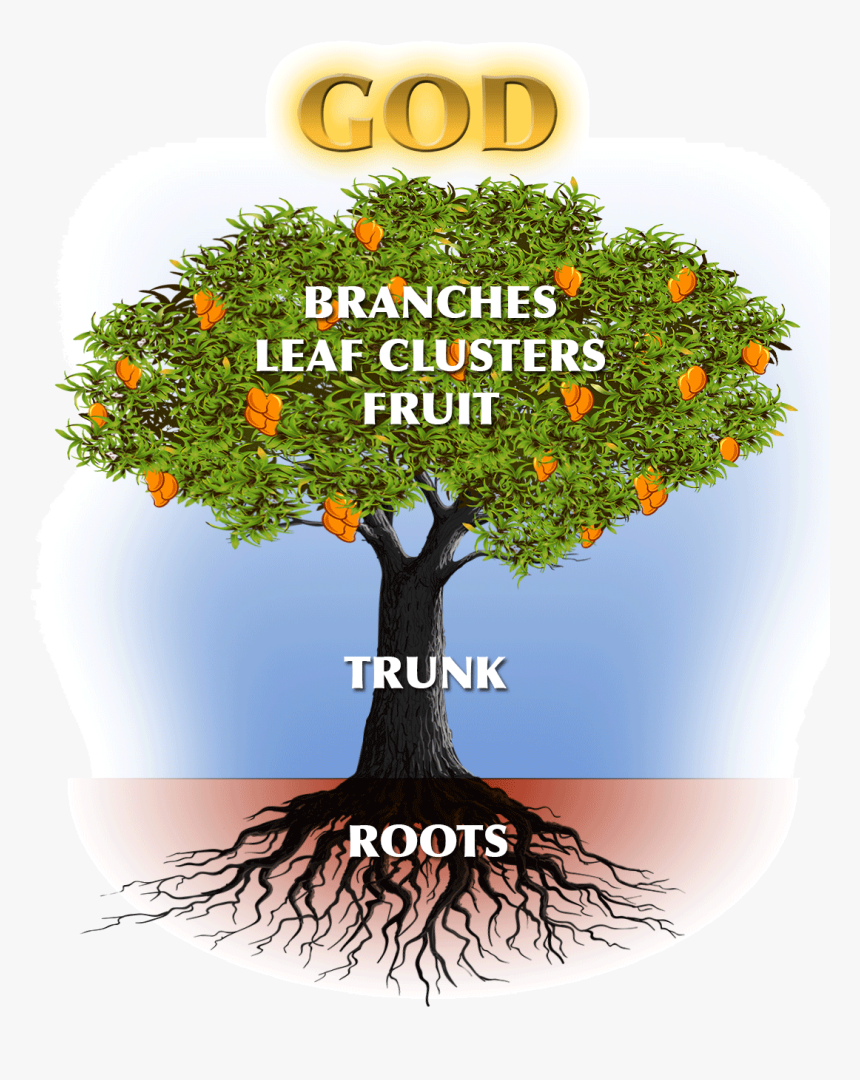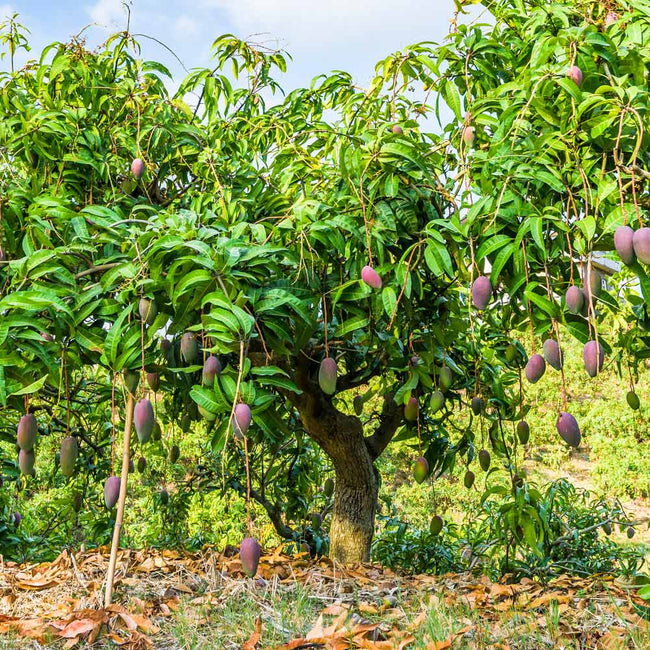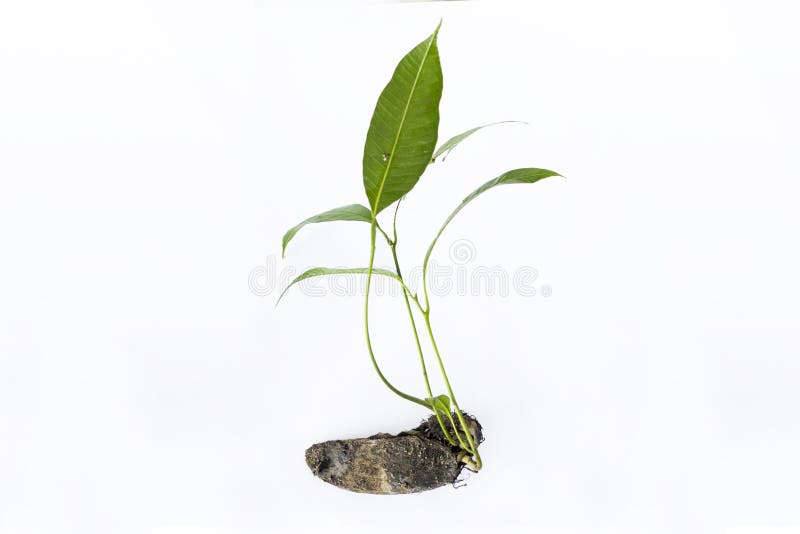
Full Mango Tree Lifespan (And How To Grow Them) Tree Journey
Grafting of mango trees, or other trees, is the practice of transferring a piece of mature, bearing tree or scion to a separate seedling called rootstock. The scion becomes the canopy of the tree and the rootstock the lower trunk and root system. Mango tree grafting is the most reliable and economical method of mango propagation.

Mango Tree Roots, Artibonite, Haiti _DSC3925 Carolina Carrera Saavedra Flickr
Mango trees are deep-rooted, symmetrical evergreens that attain heights of 90 feet and widths of 80 feet. Mango trees have simple alternate lanceolate leaves that are 12 to 16 inches in length and yellow-green, purple, or copper in color when young. Mature leaves are leathery, glossy, and deep green in color.

How to grow MANGO TREE bonasai from seeds /How to repot and prun its roots in (Hindi and Urdu
Buy Turpentine Mango Rootstock Seeds, Seedlings, Tools, Supplies and more. Grafting onto a Turpentine Mango Rootstock (Common Mango) gives your Mango Tree a robust and hardy root system that is drought, flood, pest and disease resistant. Learn different grafting techniques and what to look for when selecting budwood. Discover how to encourage more flowers and find out how the experts minimize.

Ethnomath and Roots Purple Maiʻa
The mango tree produces the delicious mango fruit, while absorbing carbon dioxide, producing oxygen, and supporting the livelihoods of thousands of workers. It really is the amazing mango tree. Check out the 100 Year Old Mango Tree! The mango tree is much more than just a source for mangos.

Mango Tree With Roots, HD Png Download kindpng
Mango trees ( Mangifera indica) are deep-rooted plants that may become large specimens in the landscape. They are evergreen and generally produced off rootstocks that increase the hardiness of the plants. Mango trees begin fruit production in three years and form fruit quickly. Choose a variety that is best suited for your zone.

Forum Transplanting Mango Tree
Mulch Fertilize Also Know About Other Tree Root Systems Existence of a Mango Tree Pulpy Mangoes Mango tree typically is an origin of southeastern India. It was first seen in California in the year 1880. There are two races of mango trees, found in India and the Philippines.

Mango Tree With Roots Twin Fruit
Despite the challenges, with the right conditions and care, you can grow a mango tree from a cutting. This comprehensive guide will provide you with the necessary steps, factors, and other methods to propagate mangoes successfully. Supplies Needed A healthy mango tree to take cuttings from A pot with good drainage A sharp pair of pruning shears

How Do Mango Tree Roots Grow Justagric
The mango trees are tropical species, scientifically known as Mangifera Indica belongs to the family Anacardiaceae. The genus contains around 69 species divided between edible and non-edible fruit-producing trees, and the most popular one is commonly known as a mango tree.

Mango Tree Root System StudiousGuy
The Mango root system is a combination of taproots which consists of primary, secondary and tertiary roots. Mainly the mango root system has thick, thin and cylindrical-shaped roots. The roots are not shallow but their deep, as well as the roots, are invasive and wild.

Tree Roots Common Problems with Root Systems The Tree Center™
Mangos are considered tropical trees that can be grown in USDA Hardiness Zones 9B - 11. If you don't know what your USDA Hardiness Zone is, you can input your zip code into the USDA's Hardiness Zone Map (they recently changed in 2023). I have also included the latest and greatest map below: Image Credit: U.S. Department of Agriculture

The Mango Tree Roots by DonFofo
A mango tree can have roots that extend up to 6.1 meters, or 20 feet, deep in the ground. The type of soil the tree is planted in, as well as how much water and fertilizer the tree gets, can affect the depth of its roots. The roots of a mango tree can grow up to 20 feet deep.
:max_bytes(150000):strip_icc()/grow-mango-seeds-1902625-04-ad10ef4af2b34ca68c3bf240a04a3cff.jpg)
How to Grow Mango Trees
6 Final Words. Mango tree roots are known to be very invasive, and can often cause problems for nearby buildings and pavement. In many cases, the roots can even break through concrete and asphalt. If you have a mango tree on your property, it is important to be aware of the potential damage that the roots can cause.

Mango Tree Seedling With Big Roots Stock Photo Image of botany, background 45712352
1. Diabetes Mango peel is rich in dietary fiber, polyphenols, and carotenoids. In the study, it was found that peel can be included as a therapeutic food. Mangoes fruit are also suitable for diabetes patients as they are low in fat and sodium and have a low glycemic index. [ 1] The tree leaves also have diabetes-fighting capabilities.

Mango Tree Seedling With Roots Stock Image Image 45712497
Do mango tree roots invade your home or yard? The answer depends on the type of soil in your backyard and how healthy the tree is. Yes, the roots are invasive and aggressive. Mango tree roots can grow to be very long, and they can penetrate through concrete and pipes with ease.

Mango Tree Root System Tere Fruit
Mangos are tropical and sub-tropical trees that thrive in regions with warm temperatures. Indigenous to India and southeast Asia, trees are particularly susceptible to two diseases of mango: anthracnose and powdery mildew. Both of these fungal diseases attack emerging panicles, flowers, and fruit.

Mango Tree Seedling With Roots Stock Image Image 45712497
• There are three types of roots found on a mango tree: taproots, fibrous roots, and adventitious roots. • These roots are divided into different zones, each with its own unique structure and purpose. • The root system of a mango tree has several functions, such as providing the tree with nutrients and anchoring it in the soil.